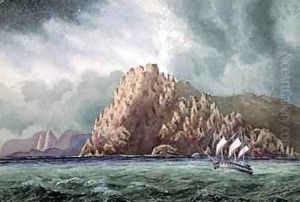J. Linton Palmer Paintings
J. Linton Palmer was a British naval surgeon and antiquary, known less for his artistic endeavors and more for his contributions to medical science and his historical research. He was born in 1822 in Whitchurch, Shropshire, England. Although not traditionally recognized as an artist, Palmer's name may occasionally surface in contexts involving medical illustrations or historical documents of interest to art historians, particularly those studying the intersection of art and science or the documentation of historical artifacts.
Throughout his career, Palmer was engaged with the Royal Navy, and he traveled extensively, which allowed him to observe and document various aspects of life and culture during his voyages. His work as a surgeon during the time of the British Empire exposed him to a variety of locations and experiences that may have influenced any documented sketches or illustrations he produced. However, Palmer's primary legacy lies in his medical practice and his historical and antiquarian studies.
In his time as a naval surgeon, Palmer made significant contributions to the understanding of diseases like yellow fever and was involved in the health management of seamen. He was a member of several learned societies and published a number of papers on topics ranging from medicine to history and archaeology. His historical work included research on the Roman remains in the English city of Chester and studies of prehistoric stone circles and other archaeological sites.
Palmer's death occurred in 1900, and he left behind a body of work that reflects his interests and expertise in areas other than traditional fine arts. While his name is not commonly associated with a body of artistic works in the same way as professional painters or sculptors, his contributions to other fields are of historical importance and may be of interest to researchers in various disciplines, including art history, for their cultural and historical value.
